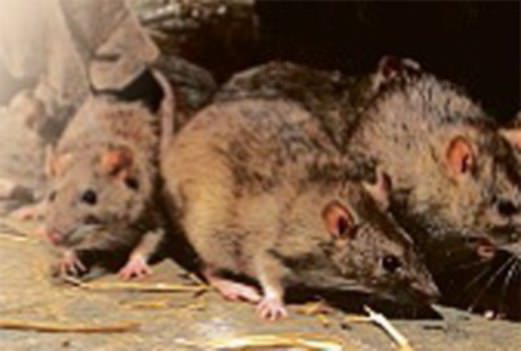KUALA LUMPUR: The number of leptospirosis cases in the country will continue to surge unless the authorities and public stamp out unhygienic practices.
Deputy Health director-general (public health) Datuk Dr Lokman Hakim Sulaiman said the rise in the number of cases did not go well with the country’s image as a developing nation since leptospirosis was often associated with poor hygiene and sanitation and rodent-infested cities.
The ministry’s statistics showed there were only 263 cases in 2004, but the number spiked to 7,806 last year. As of July this year, there were 5,370 cases.
Last year, Selangor (1,832), Kelantan (1,030) and Sabah (930) recorded the highest number of cases, while Perlis (20) and Labuan (25) had the least number.
Selangor and Kelantan continue to top the list this year, with 876 and 1,270 cases, respectively. Sarawak (513), Kedah (476) and Terengganu (461) showed an increasing trend in leptospirosis, as of July this year, as compared with 616, 699 and 374 cases, respectively, last year.
As cases were reported in every state and federal territory, the statistics showed leptospirosis was endemic in Malaysia, Dr Lokman said.
As of July, the incidence of leptospirosis in Kelantan and Terengganu exceeded the number of cases in the whole of last year.
“These two states, especially Kelantan, experienced severe flooding late last year and early this year.
The increases could be related to the floods,” he told the New Straits Times.
Dr Lokman said since the notification of leptospirosis was made mandatory in December 2010 (under the Control and Prevention of Infectious Disease Act 1988), the number of reported cases was on the rise.
“Prior to 2010, the incidence does not reflect the real situation. Nevertheless, it showed an increasing trend over the years, with a significant rise in 2012, presumably, because of improved reporting.
“The media contributed by giving extensive coverage to leptospirosis occurrences, leading to increased awareness among the public.
“This led to early healthcare-seeking behaviour, as well as improvement in capability and capacity in diagnosing the disease.”
The risk of infection, he said, was influenced by several factors, such as overall environmental sanitation and hygiene, as well as population density, where the higher the density, the more people were at risk of infection.
Animal reservoir density also has a role, where the risk of exposure and infection to humans was higher when the density of the reservoir host population was higher.
Dr Lokman said dirty and unsanitary environments, coupled with poor maintenance (of food outlets and blockage of drainage) and human behaviour (improper disposal of waste and food leftovers) would provide food and a fertile breeding ground for rodents.
He cited recreational waterfalls as an example of a prime breeding ground for rodents. He said the food available at an undisturbed natural environment was usually not enough to sustain a high rodent population.
“They will, of course, urinate and contaminate the waterfall.
But, because of the low rodent population density, the volume of urine is also small in relation to the volume of water flowing.
Therefore, the risk of exposure to humans is also low.
“Unfortunately, when we care less about the environment and start leaving behind food waste, the rodents flourish.
As their population increases, the risk of contamination also increases.
“No city is rodent-free, including New York, Tokyo and Singapore. You do not notice them because these cities have good underground sewage, waste water, drainage and waste disposal systems, and do not have much food waste.
“As a result, when rats cannot find food on the surface, they confine themselves underground, where they can find food.
“Therefore, the risk of contamination is low, so the risk of exposure is also low.”
Dr Lokman said although Malaysia had underground sewage and drainage systems, waste food was abundant on the surface, leading to the high rat population density.
He said the condition of most of the wet markets was also poor.
Those who shopped at wet markets wearing slippers (uncovered footwear), he said, were at risk of acquiring the infection when stepped into water-filled potholes that could be contaminated by rat urine.
He stressed that leptospirosis was an environmental health issue that was related to cleanliness, environmental hygiene and sanitation.
“As long as we do not address these issues, it will be difficult to control leptospirosis. “We do not have vaccines to protect us from leptospirosis. Targeting the rodent is not the answer because rodents are prolific breeders.
“Baiting, rat-catching competitions and sporadic gotong-royong are cosmetic measures, because they do not address the core issue — environmental sanitation.
“We can improve personal hygiene through health education, but the risk will continue if we do not address the reason the rodent density is so high and so close to us.”-nst







